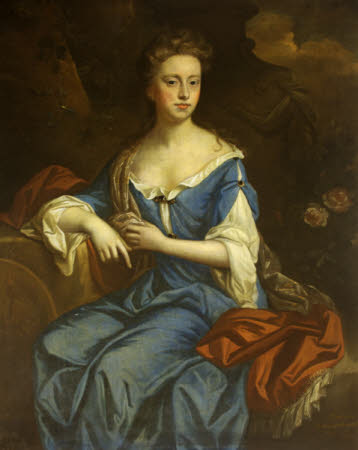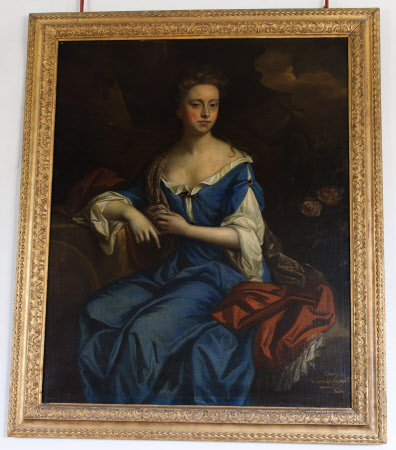Barbara Talbot, Viscountess Longueville (1665-1763)
manner of Jan van der Vaardt (Haarlem 1647 – London 1727)
Category
Art / Oil paintings
Date
circa 1685 - circa 1690
Materials
Oil on canvas
Measurements
1245 x 991 mm (49 x 39 in)
Place of origin
England
Order this imageCollection
Lacock, Wiltshire
NT 996330
Caption
It seems probable that this portrait was painted just before Barbara's marriage in 1689, because she is not wearing ermine, which was traditional for married women. She lived until the age of 98 - a long life by eighteenth century standards. Contemporary accounts describe her charitable nature, and her 'spirit of Old English hospitality.' Van der Vaardt was born in Haarlem, but came to England in 1674. He is known to have painted draperies and accessories for Wissing.
Summary
Oil painting on canvas, Barbara Talbot, Viscountess Longueville (1665-1763), manner of John Vandervaart (1653 - 1727), circa 1685-1690. A three-quarter-length portrait, seated, portrait of Barbara Talbot, Viscountess Longueville, second daughter of Sir John Talbot (1630-1714) and wife of the 1st Viscount de Longueville. She is shown three-quarter length, seated, wearing a white and blue dress and orange cloak, her right arm resting on a plinth. The roundel to the left has a monk sculpted on it.
Full description
Second daughter of Sir John Talbot and Barbara Slingsby; on 11th July 1689, she married Henry Yelverton (P/65), 15th Baron Grey de Ruthyn, created Viscount de Longueville in 1690. Their son, Talbot (P/60), was created Earl of Sussex. She died at the age of 98 at Brandon in Warwickshire where, according to the Gentleman’s Magazine, she had “resided for the last 40 years of her life, and kept up the spirit of Old English hospitality, by relieving all her poor neighbours, and every indigent person that applied at her gate” (1763, Jan. 31st) Oliver Millar, on the basis of a CI photo (1996), suggested ‘style of Wissing.’ It is possible that the portrait was painted just before her marriage in 1689, since she is not wearing ermine.
Provenance
given by Matilda Theresa Talbot (formerly Gilchrist-Clark) (1871 – 1958), who gave the Abbey, the village of Lacock and the rest of the estate to the National Trust in 1944, along with 96 of the family portraits and other pictures, in 1948
Credit line
Lacock Abbey, The Talbot Collection (National Trust)
Marks and inscriptions
Bottom right: Barbara / Viscountess Longueville / daughter of / Sir J Talbot [CHECK]
Makers and roles
manner of Jan van der Vaardt (Haarlem 1647 – London 1727), artist attributed to British (English) School, artist

